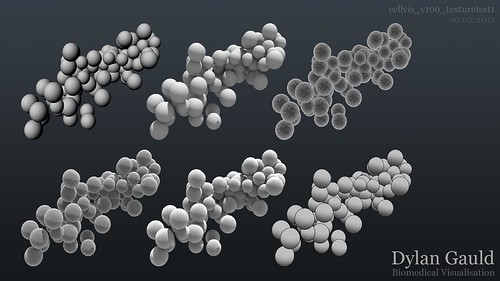After figuring out MEL scripting, and using it to create an entire Maya scene for me, I chose to begin experimenting with compositing further.
This involved setting up render layers in Maya and testing how they work - creating different layers for specular highlights, shadows, depth passes, etc. After a bit of tweaking, I am confident that I will use this moving forwards.
These render layers were then taken directly into Nuke as image sequences, where I praticed reading and writing files, merging nodes, and also colour correction and grading - all of which will be relevant to my own work, and a crucial stage in presenting work to a professional level.
Simulating depth of field formed an important part of my testing, as this would be used alongside my cell visualisation work - giving the impression of viewing tiny microscopic objects. A short render of a composited file in Nuke can be seen below;
After ensuring I could work with render layers and depth of field, I started to look at possible textures to use with some of my cell visualisation work. Examples of these can be seen in the image below;
Although there is still a lot of work to do, my visual style is developing, and I am hoping to continue this experimentation, with a focus on adding colour. More importantly however, is how I use these attributes to present my work to a specific audience - this is something I will have to discuss with the mathematicians, as I will need to define their audience before I can design for it.
In addition to continuing my cell visualisation work, I have carried on developing my skills in using RealFlow. Below is an example of the type of work I have been undertaking;
I am still planning on learning how to use Houdini - primarily because my scripting has come to a halt in Maya. Within Maya, individual particles (as part of a particle field) cannot be manipulated as they have no Transform node. This means that I cannot use my MEL script to automatically generate and keyframe a particle field. Although I do not know much about Houdini, it seems more technically advanced, and I hope that it will help me take my script to the next level.


No comments:
Post a Comment